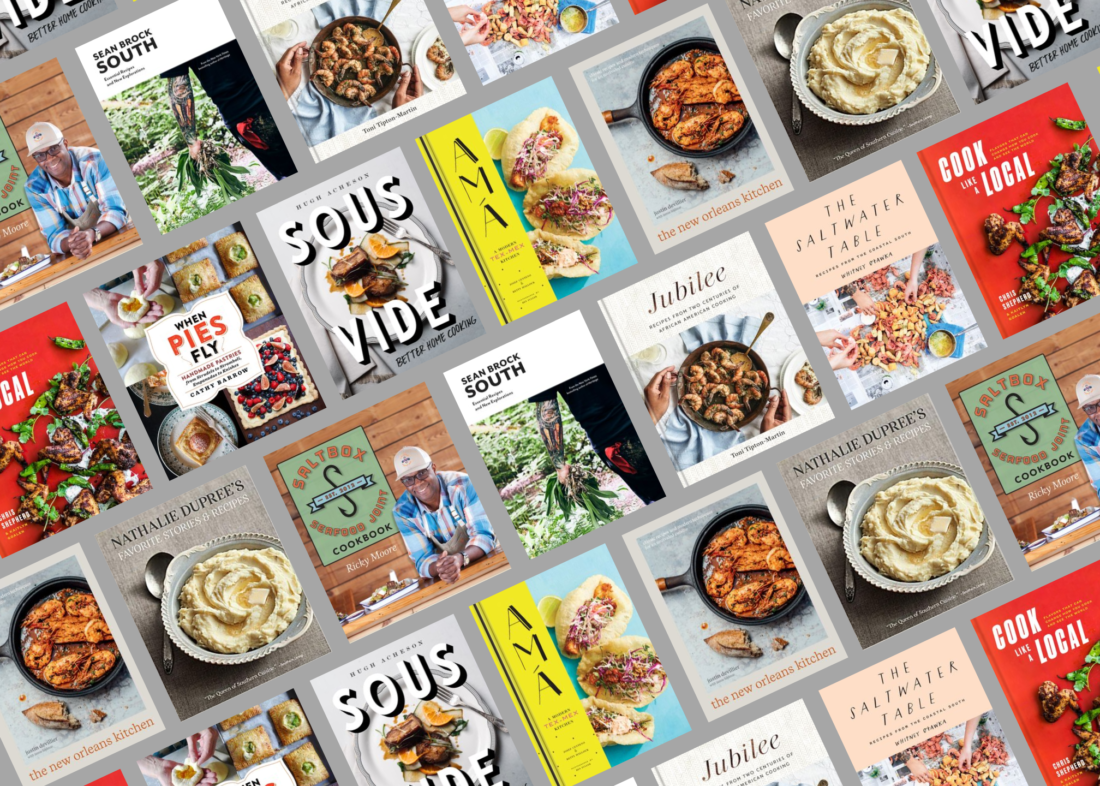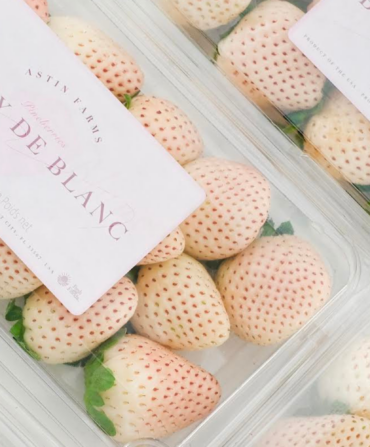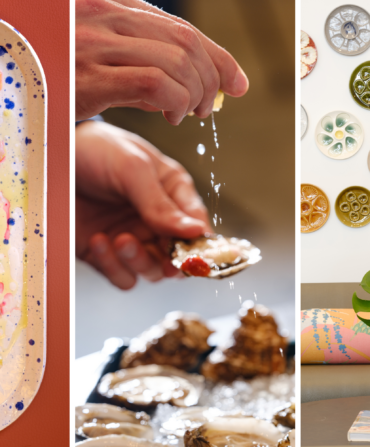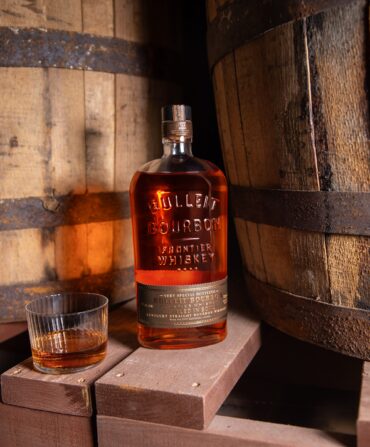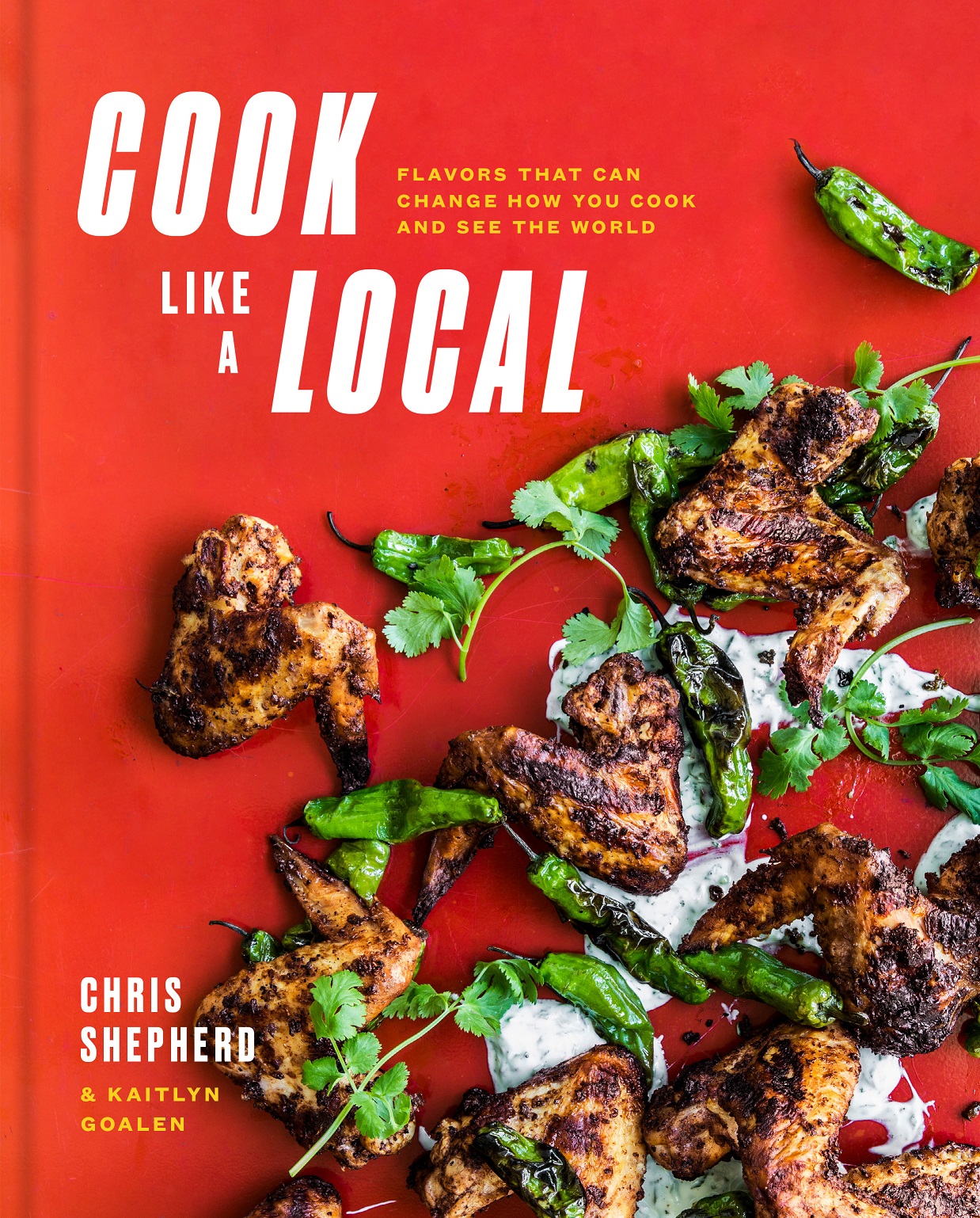
Cook Like a Local: Flavors That Can Change How You Cook and See the World
By Chris Shepherd and Kaitlyn Goalen
It’s hard to imagine a better or more enthusiastic guide to America’s most vibrant food city than Chris Shepherd, the Houston chef who came to national prominence at Underbelly, and now operates a fleet of restaurants. With Cook Like a Local, Shepherd guides readers and cooks through some of modern Houston’s defining ingredients—fish sauce, soy, and chiles. Since he also shares the stories of the newly-minted Americans who brought their foodways to this swampy patch of the Lone Star State, the book also functions as a travel guide to some of Houston’s most exciting dining. And the recipes are fun. They practically scream, “Invite all your closest friends over and throw an epic dinner party.” Who could resist a crowd-pleasing menu of short-rib lettuce wraps (aka “Meat Chips”), BBQ Baked Field Peas seasoned with the salty sweetness of kecap manis, and a jalapeño-spiced Tater Tot casserole? Lure ’em in with that, and they’ll be clamoring to come back for more challenging dishes like mapo tofu or Persian rice with cherry-pomegranate braised lamb. Read more about Shepherd here.
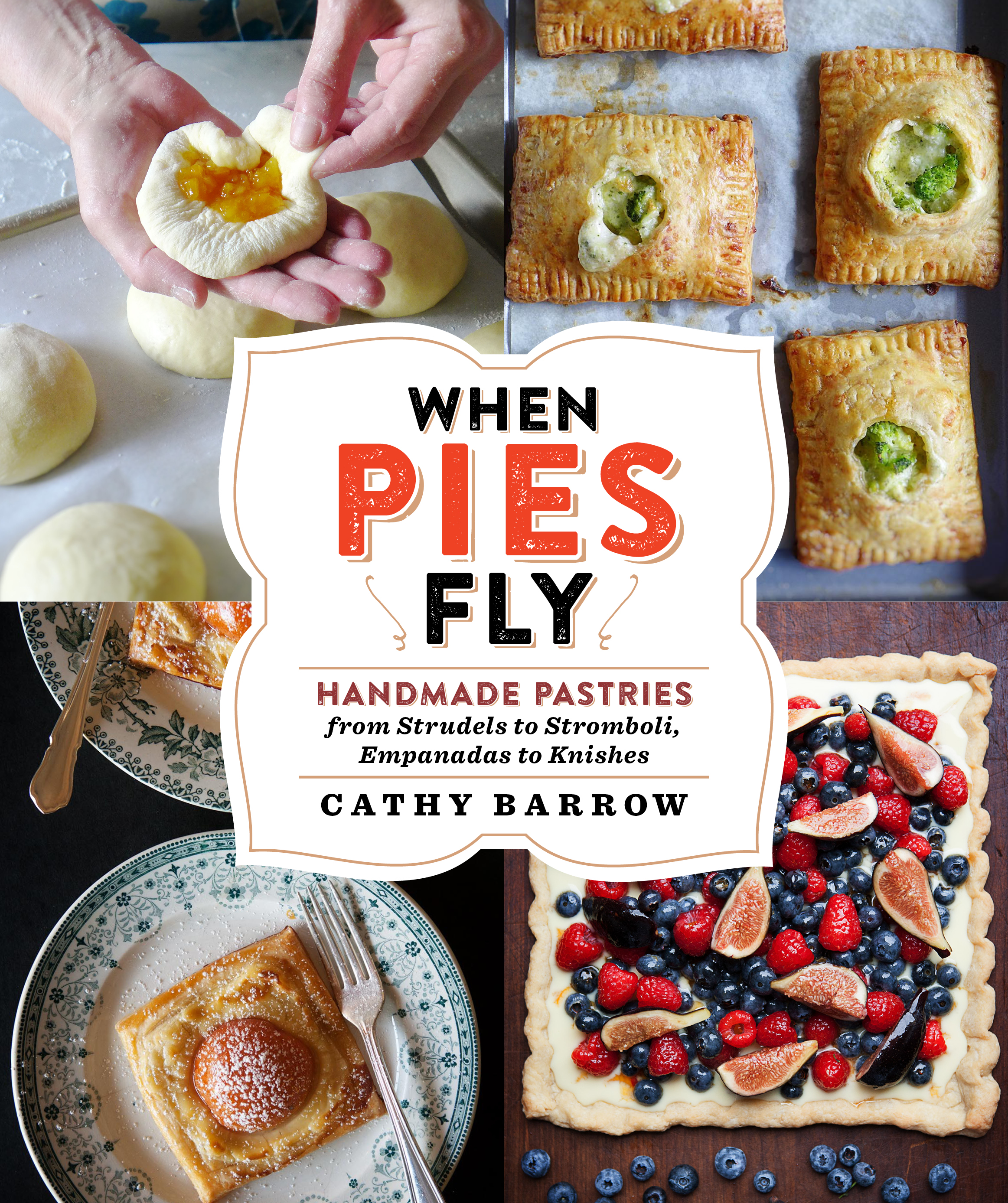
When Pies Fly: Handmade Pastries from Strudels to Stromboli, Empanadas to Knishes
By Cathy Barrow
2019 has been a banner year for pie books already; in March, Atlanta-based competitive bakers Chris Taylor and Paul Arguin released The New Pie, full of the almost scientifically-specific recipes that have helped them capture hundreds of awards at baking competitions. Now, Marylander Cathy Barrow returns to the subject she began exploring in last year’s study of slab pies, Pie Squared. When Pies Fly isn’t a primer for Thanksgiving sideboard show-stoppers, though; instead, Barrow’s new book is devoted entirely to the world of portable hand pies—from knishes to kolaches, and anything else that can be folded into dough and baked or fried. She starts with galettes, the beginner-friendly free-form pies, and builds from there. Later chapters contain empanadas, phyllo-wrapped tryopita (spanakopita’s cheese-filled cousin), spring rolls, and samosas. Barrow saves the best for last—a chapter devoted entirely to different doughs—all-butter, chocolate, and cream cheese pie doughs, yeast dough for kolaches, even a quick puff pastry. Meet Barrow here, and sample two of her creations: brown sugar–cinnamon hand pies and Kalbi short rib hand pies.
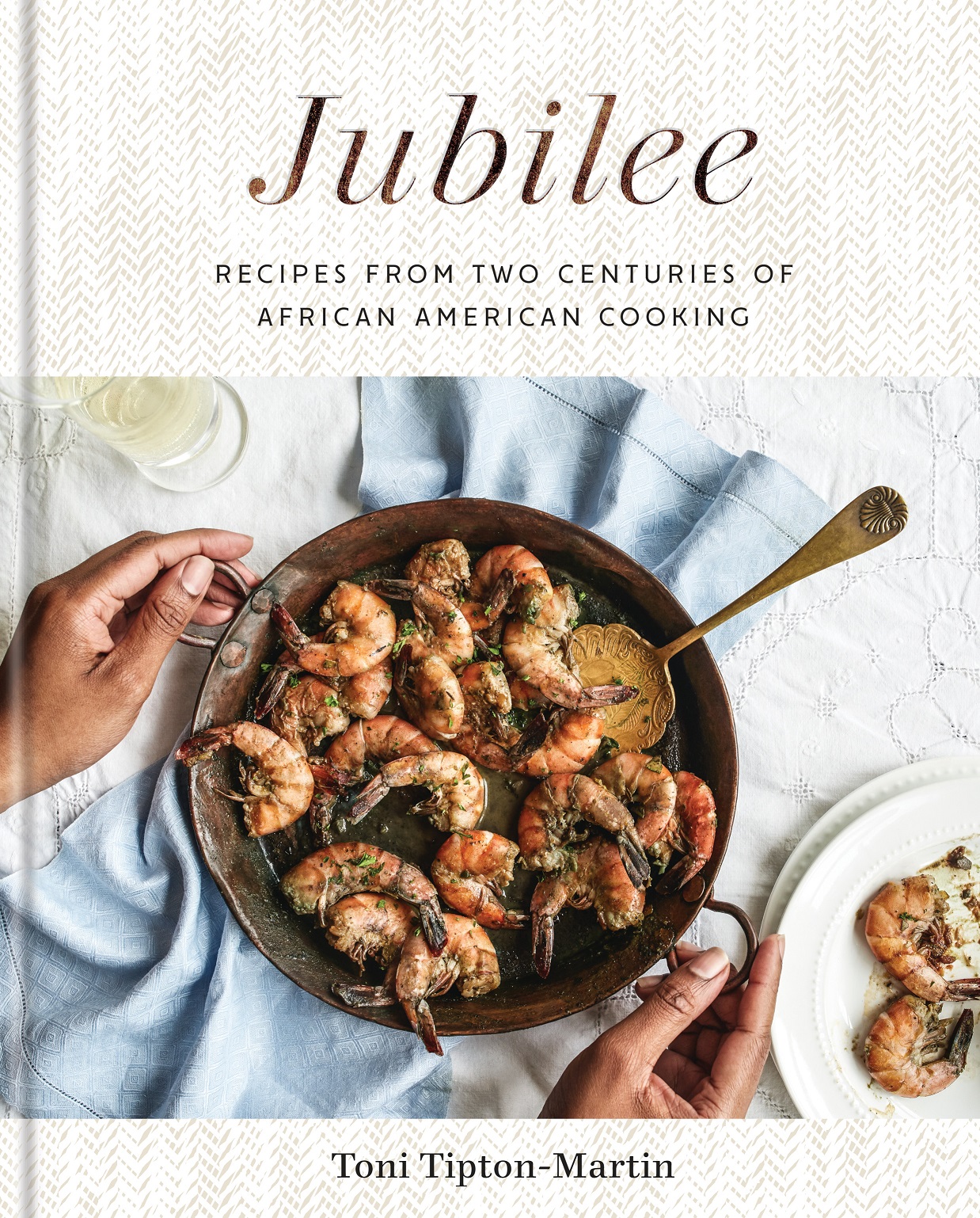
Jubilee: Recipes from Two Centuries of African-American Cooking
By Toni Tipton-Martin
With The Jemima Code, Toni Tipton-Martin unveiled a world of African American cooking that had nearly been lost to history. Now, with her follow up, Jubilee, she invites readers—and eager cooks—to taste it with dishes inspired by her extensive research. Few food writers today better understand that recipes themselves are stories. “I have tried to honor the kind of joyous cooking that would have turned yesterday’s enslaved and free cooks into today’s celebrity chefs with glittering reputations grounded in restaurant fare and cookbook publishing,” Tipton-Martin writes. Readers expecting a soul food compendium are in for a pleasant surprise. Yes, there’s cornbread—five different takes on it—but there’s also Sweet Potato Bread, inspired by Mildred Council’s Mama Dip’s Family Cookbook, and Rice Muffins, informed by the experience of Lessie Bowers, a mid-twentieth-century South Carolina cookbook author. There’s gumbo, but also crawfish bisque; rum punch and Champagne cocktails. Tipton-Martin partners with modern-day African American chefs, too; Mashama Bailey, of the Grey in Savannah, helped guide Tipton-Martin’s recipe for pickled shrimp. No collection of Southern cookbooks is complete without this labor of love. Read more about Tipton-Martin and her work here.
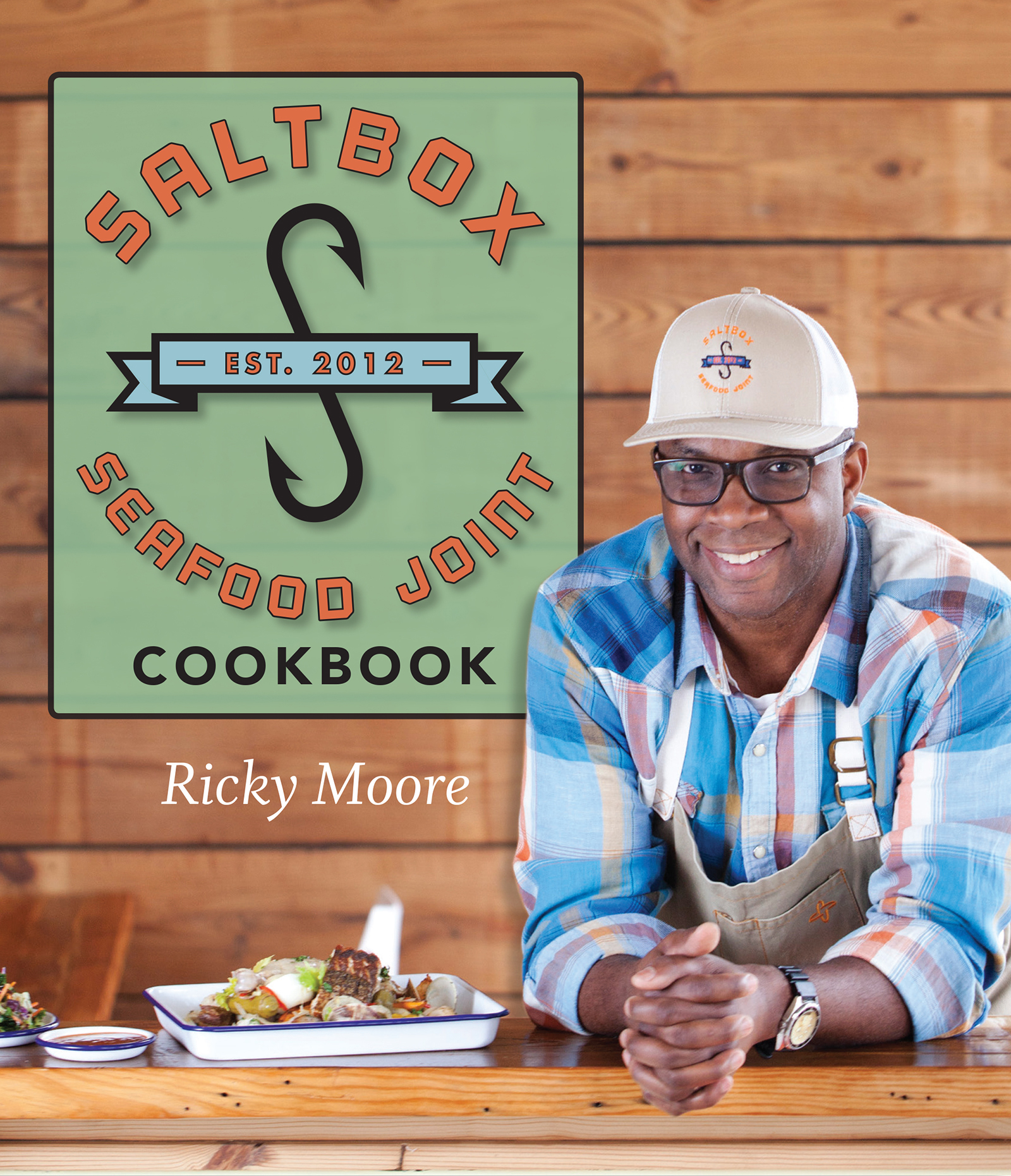
Saltbox Seafood Joint Cookbook
By Ricky Moore
Before he followed his father into military service in the U.S. Army, Ricky Moore was a kid who grew up fishing where the Trent and Neuse Rivers meet in New Bern, North Carolina. His new cookbook, built on his Durham-area restaurants of the same name, offers dozens of regional Carolina specialties—from chicken-fried sugar toads to “Warsh” Pot Stew, a layered blend of air-dried sausage, onion, potato, and rockfish—alongside such flourishes as Singapore-Style Fish Collar Curry, gleaned from Moore’s time spent feeding hungry grunts. Chapters cover basics (stocks, spice rubs, and dredges), along with techniques like frying, grilling, one-pot stews and soups. Sides, such as lemon rice and succotash, are designed to perfectly complement seafood. Grits get their own chapter. The book is full of advice that real-world cooks will value. For example: Save your frying oil, Moore advises. (Anyone who’s ever had to dispose of quarts of used-only-once oil will appreciate this.) Another great tip: Brown all-purpose flour to add even more flavor to such “sweater-weather” dishes as Oyster and Andouille Gravy over Grits. Get to know Moore here, and keep his All-Purpose Seafood Dredge in your pantry—and your fry-up recipe repertoire.
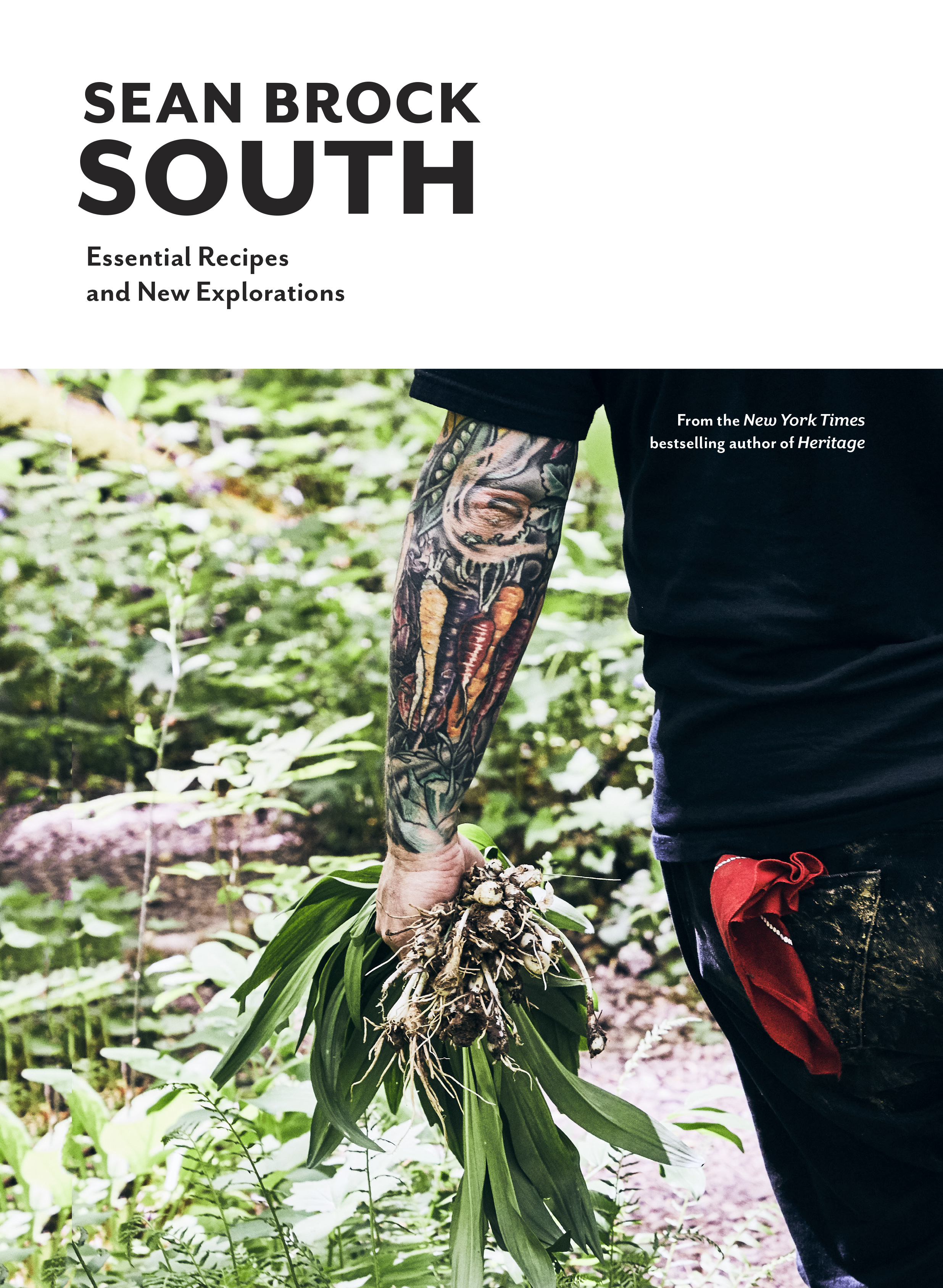
South: Essential Recipes and New Explorations
By Sean Brock
Pause for a moment to consider the cover of one of the fall’s most anticipated cookbooks: If Heritage, Sean Brock’s 2014 debut, showed the chef’s tattooed arms proffering the magical heirloom beans he helped revive, his new cookbook, South, shows a chef on the move, striding forth into the mountains with a bundle of ramps in hand. Behind him are boiled peanuts, the famous Husk cheeseburger, Ol’ Fuskie Crab Rice, and other Lowcountry-influenced dishes of the kind he made famous during his time in Charleston, South Carolina. Ahead lie Canned Greasy Beans, Sour Corn Chowchow, Crowder Pea and Hominy Succotash, and other foods from his youth in rural Virginia that will form the centerpiece of the Appalachian-cooking campus he’s building in Nashville. Read G&G contributing editor Jonathan Miles’ full review of South here, and more about Brock’s culinary evolution in an exclusive interview here.
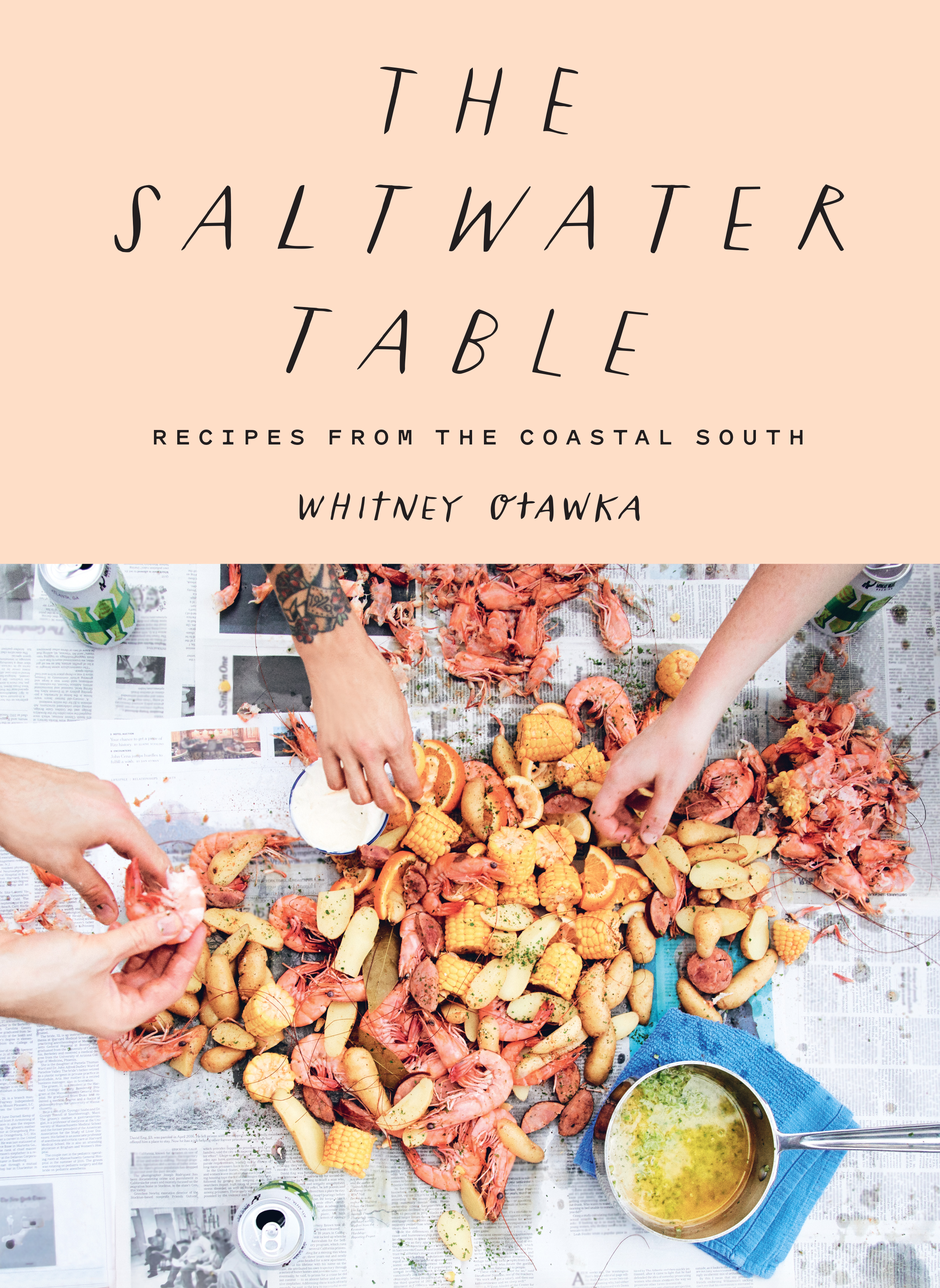
The Saltwater Table: Recipes from the Coastal South
By Whitney Otawka
When a trip to grocery store involves chartering a boat, you tend to make do. For chef Whitney Otawka of the Greyfield Inn, the exclusive retreat on Georgia’s largely uninhabited Cumberland Island, “making do” means making the most of produce from the inn’s garden and the abundance of seafood from the surrounding marshes and waters. Even so, in her assured hands, the recipes from her first cookbook, The Saltwater Table, feel right at home in any urban or suburban kitchen. For example, she elevates humble fish and grits with a touch of shrimp butter to make a tasty blend of two traditional Lowcountry dishes. “Fish and grits was the first meal I was served on the island,” the chef recalled in a recent interview with G&G. She couldn’t have been farther from home—Otawka grew up in a small Mojave desert town, and worked her way east from California, with stops in the Georgia kitchens of Hugh Acheson and Linton Hopkins. “What I loved about it is that it was soulful and felt very authentic to the place,” she said. Other bona fides in the book: fried pork chops sauced with bay laurel gravy, root vegetable soup with turnip-green pistou, and golden-crisp Vidalia onion petals. There are even step-by-step instructions for throwing an oyster roast, the traditional Lowcountry wintertime celebration.
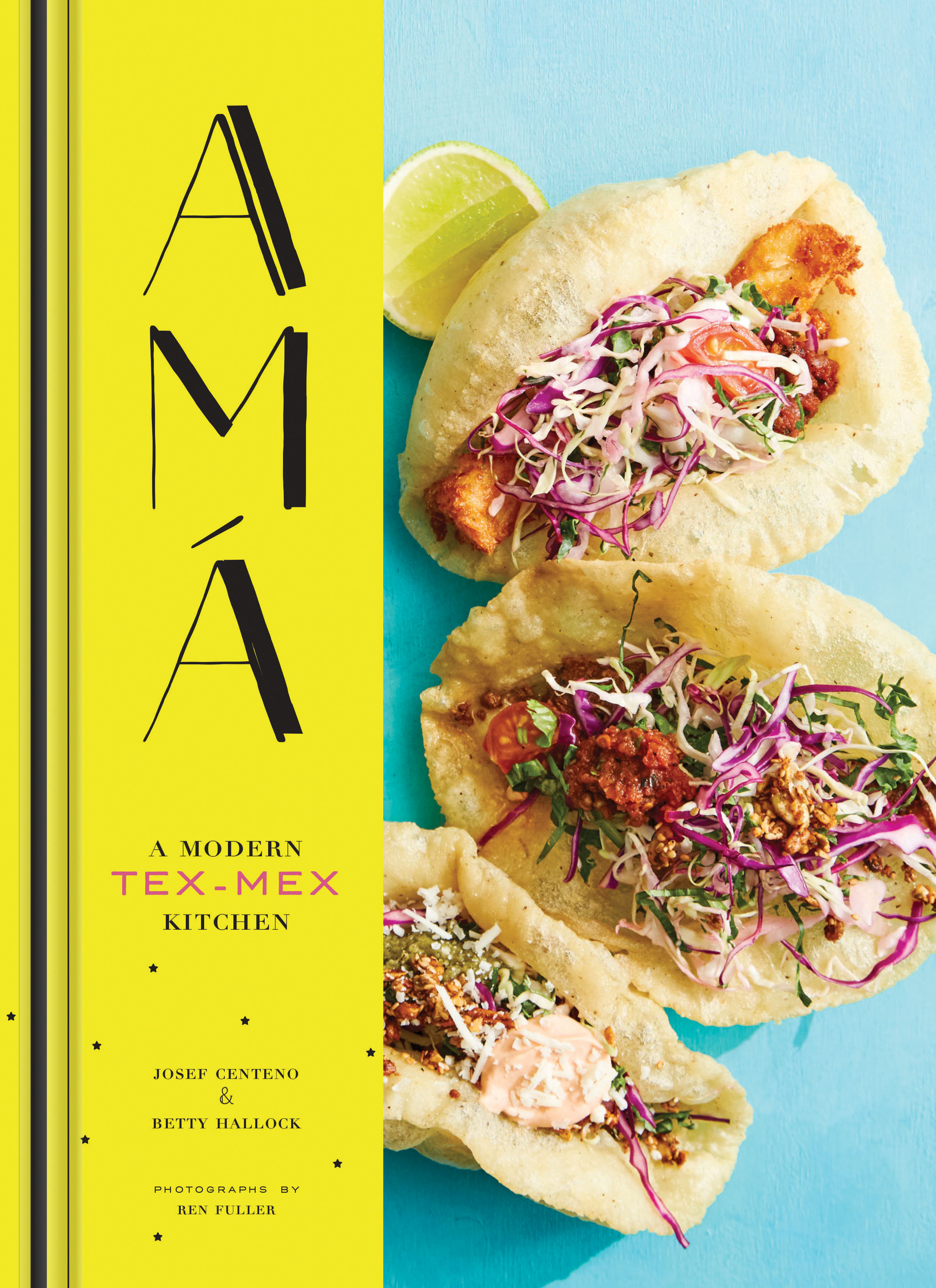
By Josef Centeno and Betty Hallock
Like many young men, Josef Centeno had to leave home before he could appreciate it. After journeying through a variety of Michelin-starred kitchens around the country, he now makes his living in Los Angeles, where he came to acclaim reimagining Mediterranean cuisines at Bäco Mercat. But the pull of San Antonio and especially memories of his maternal grandmother, Amá, for whom his second restaurant and new cookbook is named, were never far. So it’s fitting that Amá begins not with the usual list of necessary ingredients or techniques, but instead with a heartfelt introduction that charts the journeys of both sides of Centeno’s family from Mexico to Texas. (Perhaps a memoir will be his next act.) In-between-ness is fundamental to Tex-Mex cuisine, and Centeno embraces it fully. Consider his recipe for queso, the molten dip he describes as “pure Tex-Mex,” which blends Monterey Jack, cheddar, Velveeta, and Brebirousse d’ Argental, a Lyonnaise sheep’s milk cheese. Elsewhere, find Nachos Compuestas (a single layer of chips, each topped or “composed” with toppings); chicken and chile tortilla soup; puffed tacos; and chicken fried steak made even more luscious with bacon gravy. Light and bright photographs make every dish seem even more appealing—as if the entire book was assembled for a pool party. Dive in.

Nathalie Dupree’s Favorite Stories & Recipes
By Nathalie Dupree
From her home in Charleston, South Carolina, Nathalie Dupree has mentored countless chefs and cooks—her chickens, as she calls them. In nearly 80 years of life so far, she’s been there, cooked that, and earned nearly every culinary accolade there is. And she’s not done yet. This fall brings a victory lap: Nathalie Dupree’s Favorite Stories & Recipes. Not all of the recipes in this book—Dupree’s fifteenth—are strictly “Southern.” There’s French onion soup, lemon and berry tart, and garlic-stuffed roast chicken, for example. But even the most die-hard fried chicken fan wants to eat a perfectly golden oven-baked bird now and again, and what better Southern source than Dupree for learning how to prepare one? The confidence that comes with experience permeates every page. Take Dupree’s recipe for sausage and apples, one of the author’s go-to weeknight suppers. That’s it: Link sausage (though bulk works, too) and Gala apples (chosen because they retain their shape in cooking). But because sometimes cooks want a tasty homemade meal without dirtying every dish in the kitchen, Dupree also offers three recipes that make more of this flavorful combination—a soup, a quiche, and even a hearty casserole.
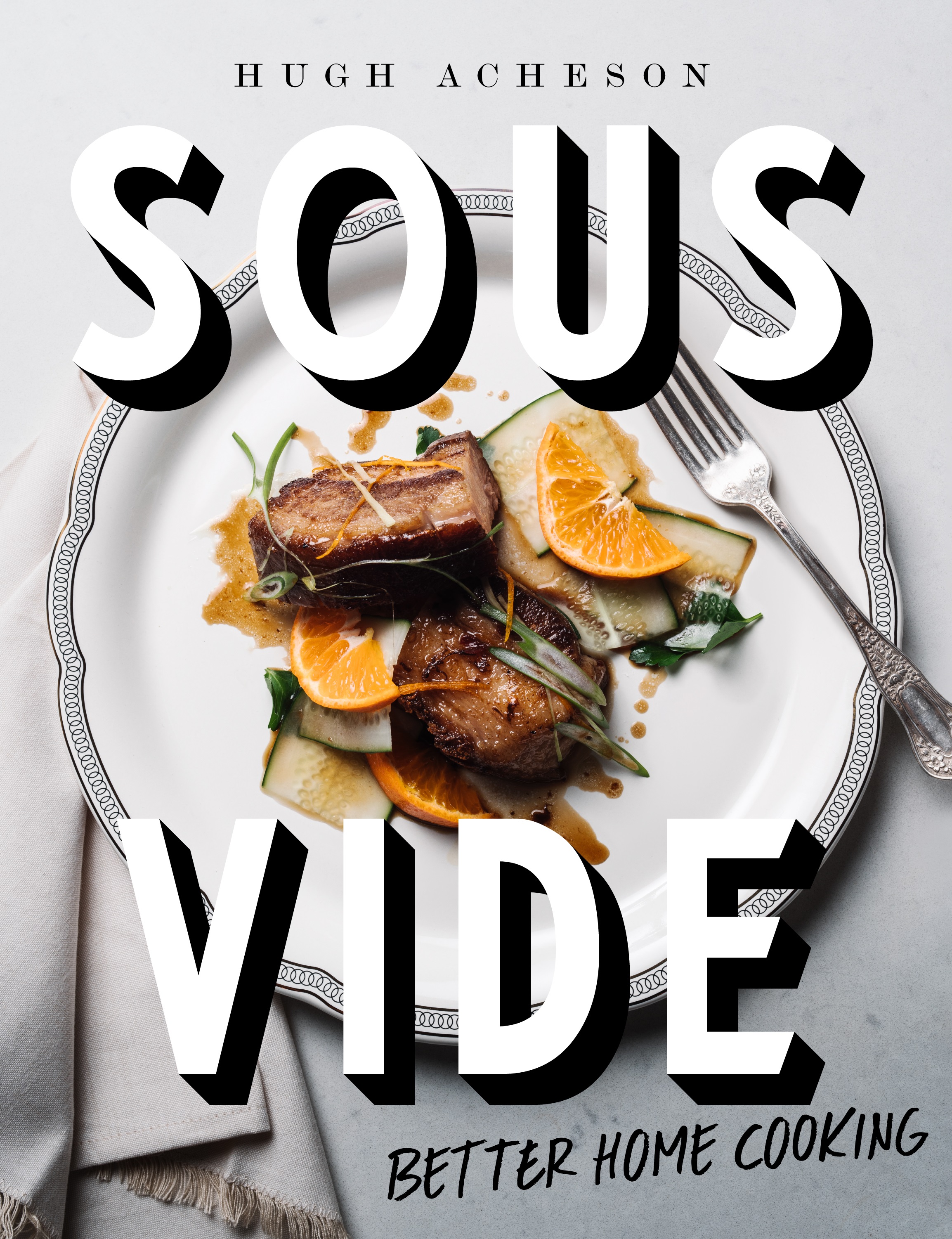
Sous Vide: Better Home Cooking
By Hugh Acheson
Grandmas populate many Southern cooking stories. And rightly so; Southerners revere tradition—and grandmothers. Granny probably didn’t have a thermocirculator, though. But if she had, she likely would’ve been delighted with all the time the appliance helped her save. In sous vide cooking, ingredients are sealed inside bags and then submerged in water perfectly temperature-controlled by the thermocirculator, which can cook and hold a steak, or anything else, at an exact temperature. (Think of it as a much more precise and versatile slow cooker.) Chefs like Athens, Georgia-based Hugh Acheson, have been early adopters of the technology, and his cool, matter-of-fact style suits this better-cooking-through-science topic perfectly. In Sous Vide, Acheson provides simple instructions up-front, then gets to the cooking with chapters covering seafood, beef and pork, stocks and sauces, and the like. Once you try the appliance, you’ll be hooked. Same for Acheson’s book. Get more tips here, plus recipes for stewed tomatoes, pork belly, and duck breast with warm mushroom salad.

The New Orleans Kitchen: Classic Recipes and Modern Techniques for an Unrivaled Cuisine
By Justin Devillier and Jamie Feldmar
“I don’t cook restaurant-style food when I’m not at my restaurants, but I do take the lessons I’ve learned as a professional chef and adapt them to whatever I’m working with,” writes self-taught chef Justin Devillier, of New Orleans’ La Petite Grocery and the recently opened Justine. In his straightforward introduction to modern Crescent City cooking, chapters follow the traditional flow of a meal—from appetizers to desserts. Devillier walks cooks through such basics as the making of roux (blonde and dark), then puts them to work throughout the book. You’ll find Devillier’s take on local classics like gumbo, po’boys, and BBQ shrimp, yes, but also chowder thickened with pureed cauliflower and oven-baked ribs with fish-sauce caramel, influenced by Louisiana’s thriving Vietnamese community. The chapter on appetizers—“my favorite things to make and eat”—gets extra love. His famous blue crab beignets make an appearance, as do pickled quail eggs, shrimp and okra fritters, and crawfish pierogi, a delightful blend of the chef’s dual Louisiana and Polish heritage.


